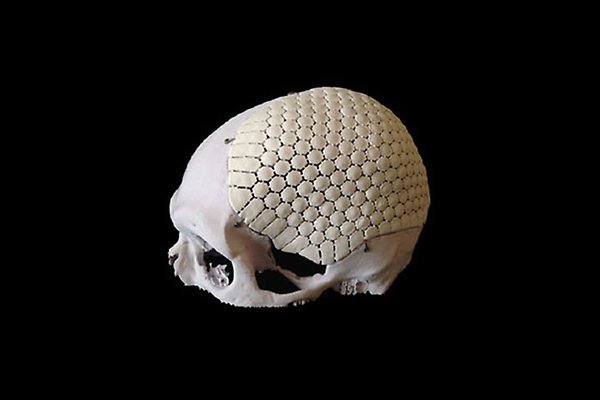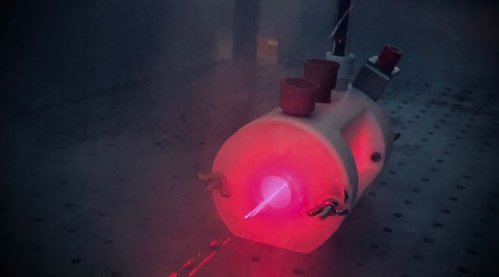New materials
How can new smart materials help us to improve people’s health, take care of nature, improve poor countries’ economies, increase efficiency in industry or help solve climate problems? Exciting research is in progress at Uppsala University for solving major societal challenges and helping to boost Swedish competitiveness and Swedish basic industries.
Ongoing new research projects aim, for example, to develop new materials for sustainable batteries or bioceramic materials for regenerating cranial bone. Other projects focus on new energy-efficient electrical components, metallic nanoparticles for better solar cells and paper filters that can purify water. The University is also engaged in research on more effective, efficient and sustainable production technologies with a focus on materials, such as additive manufacturing (3D printing). Further research is developing the carbon material graphene for industrial purposes, harnessing nanotechnology to produce a completely new type of sensor for purposes such as environmental monitoring, and investigating whether it is possible to reduce the risk of infection in implant operations.

Examples of ongoing research
Batteries of the future
Battery research is an important piece of the puzzle for the transition to renewables and a sustaina...

New semiconductor coating may pave way for future green fuels
Hydrogen gas and methanol for fuel cells or as raw materials for the chemicals industry, for example...

Eliminating the bottlenecks for use of lithium-sulfur batteries
Energy storage in lithium-sulfur batteries is potentially higher than in lithium-ion batteries but t...

Examples of infrastructures, projects and centres
MAX IV Laboratory
Sweden’s synchrotron radiation facility, the MAX IV Laboratory, is a national research infrastructure that enables research into areas such as biology, physics, chemistry, environmental science, geology, technology, pharmaceuticals and cultural heritage in order to study materials and molecules right down to atomic level. Lund University hosts the MAX IV Laboratory and a large number of higher education institutions co-finance the facility, including Uppsala University.
FREIA Laboratory
The Facility for Research Instrumentation and Accelerator Development (FREIA) conducts research into accelerator physics and light generation using charged particles, accelerator technology and instrumentation. Researchers, engineers and technicians work at the laboratory to develop and test equipment needed for research experiments at large research facilities, for example at the European Spallation Source (ESS) materials research facility and the MAX IV synchrotron radiation research facility in Lund.
Facility for Research Instrumentation and Accelerator Development (FREIA)
Wallenberg Initiative Material Science for Sustainability
Uppsala University is one of the higher education institutions which participates in a major new materials research programme that aims to create better conditions for a sustainable society. The Wallenberg Initiative Material Science for Sustainability research programme focuses on areas such as transformation, storage and distribution of clean energy and replacement of rare, energy-intensive and toxic compounds with circular, sustainable materials.
Materials in Medicine research team
The Materials in Medicine research team investigates the interaction between synthetic materials and living tissues from nano to macro level. Their aim is to develop better biomaterials for medical technology products and delivery systems for medicines, with a focus on investigating the mechanical and biological reactions.
Division for Nanotechnology and Functional Materials
The Division for Nanotechnology and Functional Materials at Uppsala University researches into nanocellulose materials for biomedical applications, nanosafety and biocompatibility, sustainable electrical energy storage and the mesoporous magnesium carbonate Upsalite.
